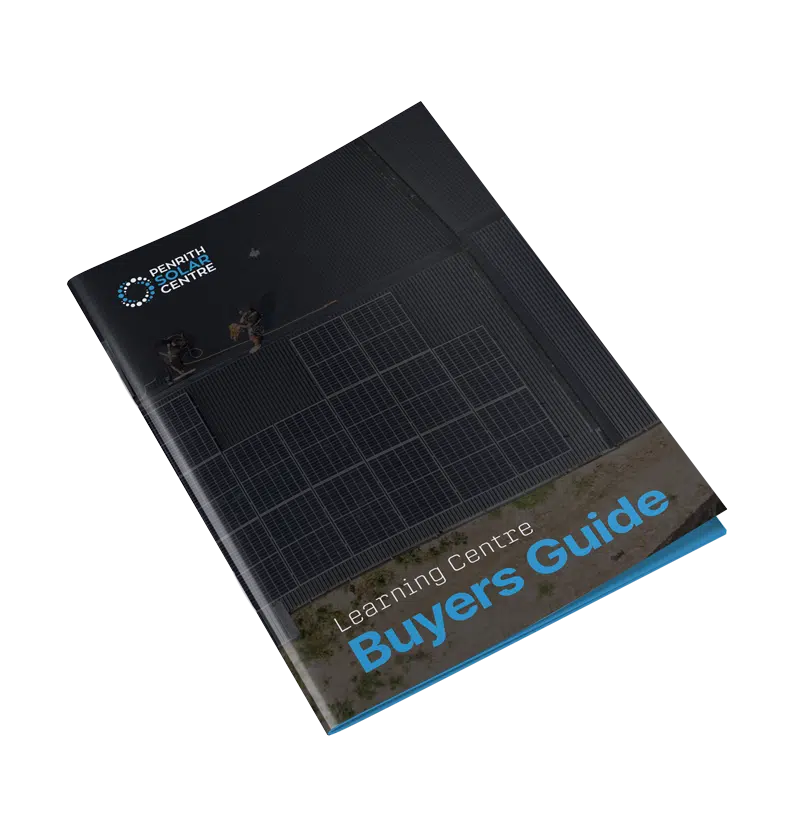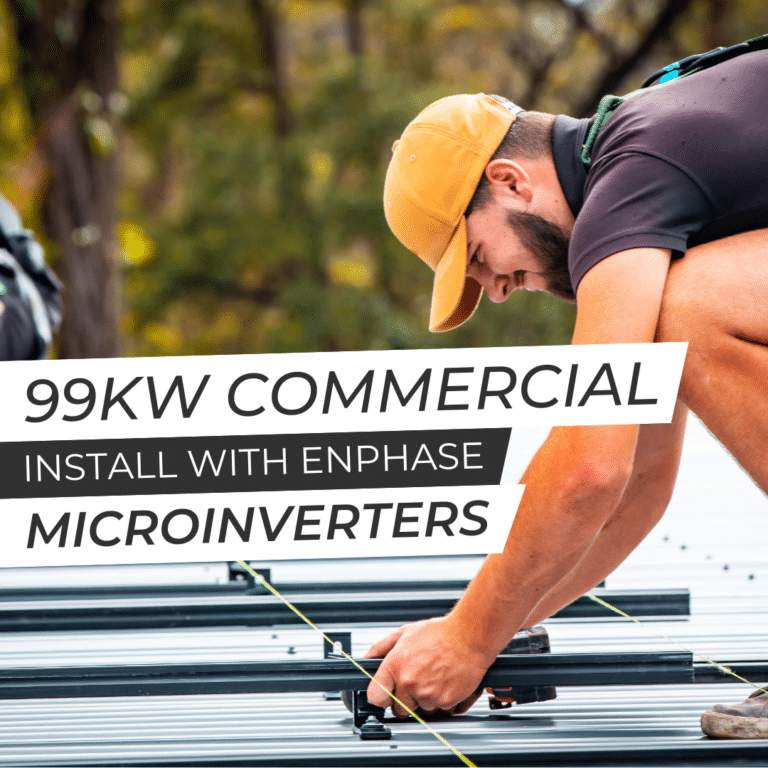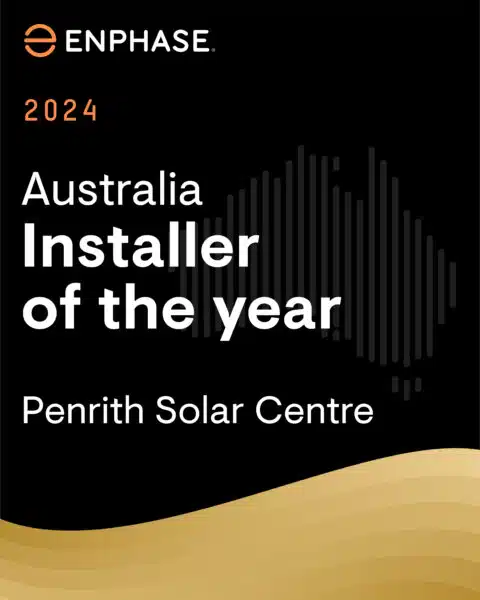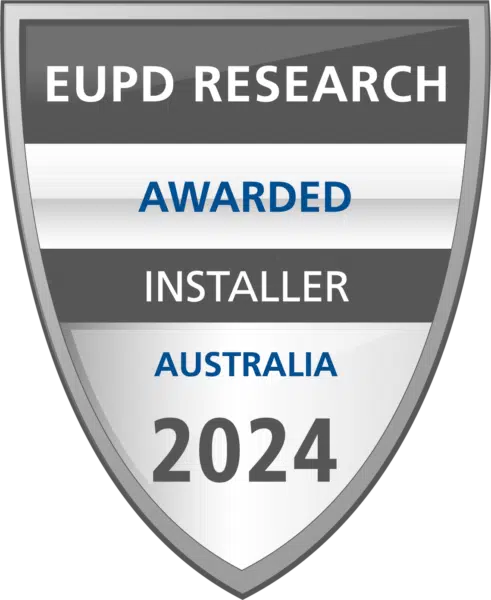Years ago, there were lucrative feed-in tariffs across Australia (and less lucrative feed-in tariffs in New South Wales). Energy retailers used feed-in tariffs to pay homeowners with solar to export excess energy back to the electrical grid. It relieved the strain on the grid in the summertime.
Feed-in tariffs are barely worth mentioning these days because they offer back so little. They’ve gone from as high as $0.66 down to $0.04 (which is about where they are now in NSW).
Virtual Power Plants (VPPs) are bringing back tariffs and rebranding them as “variable feed-in rates.”
At Penrith Solar Centre, we’ve seen some things in the solar industry come and go. We loved feed-in tariffs and are happy to see them return differently with a different technology.
In this article, you will learn:
- How Does a VPP Work?
- What is a Variable Feed-In Rate (Tariff)?
- What Are the Benefits of Variable Feed-In Rates?
- VPP Challenges and Outlook
By the end of this article, you’ll understand how VPPs work, the benefits of variable feed-in rates, and a few real-world examples.
Off we go!
How Does a VPP Work?
During sunny days, solar panels produce more energy than a home can use. Instead of wasting this energy, it gets stored in home batteries. When the grid needs extra power, the VPP can use this stored energy.
VPPs are networks of independent energy sources (home solar systems with batteries) that are like a real-life power plant if it were decentralised. VPPs are made up of many small, connected solar batteries. Instead of one big power station, a VPP uses many smaller sources to provide energy.
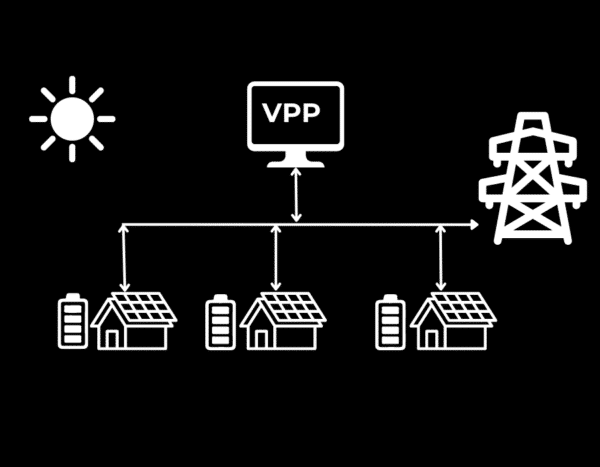
VPPs do this with cloud-based software that is connected to the solar batteries in its network. You’ll need to own a solar battery and sign up for it if you’re interested in it. The VPP software coordinates each solar battery in its network to discharge their stored energy reserves to relieve the grid.
Here’s how it works, step by step:
- Energy Generation: Solar panels on homes generate electricity and send it to the solar battery.
- Energy Storage: Solar batteries store excess energy produced by the solar panels.
- Energy Sharing: When the grid needs more power, the VPP sends out a command to discharge the energy stored up in the home batteries to export to the grid.
It’s a wonderful return to tariffs in the solar industry that incentivises communities to rely more on clean energy. Home batteries and solar panels make this possible.
One day, you might even be selling or buying excess energy from your neighbours directly.
If you’re interested in learning a bit more about VPPs and why you may want to consider one, you might want to check out the following article titled, What is a Virtual Power Plant (VPP)?
What is a Variable Feed-In Rate (Tariff)?
As we mentioned in the introduction, feed-in tariffs are rates at which you can sell your excess energy back to the grid. These payments are made to homeowners or businesses that generate and export from their solar system.
There are a lot of reasons why feed-in tariffs have exited the conversation in the solar industry. They were introduced to incentivise households to invest in solar, but as solar became popular, the price that energy retailers were willing to pay per kWh to their customers dropped.
If you connect your solar battery to a VPP network (there are many out there), they will pay you a competitive feed-in rate depending on when they are allowed to discharge your battery.
Variable feed-in rates change based on several factors, unlike standard feed-in tariffs that stay the same. The name includes the word “variable” for a reason: it changes depending on when that energy is needed.
- Demand: Rates are higher when electricity demand is high.
- Time of Day: Rates can vary depending on the time. Peak hours in the evening usually have higher rates.
- Grid Capacity: If the grid needs more energy, the rates might increase to encourage customers to export their energy.
These variable rates mean you can earn more money by selling your energy when it’s most needed.
If you’re interested in learning a bit more about how your kilowatt hours are counted, you might want to check out the following article titled, How Does Solar Net Metering Work?
What Are the Benefits of Variable Feed-In Rates?
Variable feed-in rates offer several benefits for homeowners and businesses.
Money: First and foremost, they can help you earn more money by selling your excess energy back to the grid at higher rates during peak demand times.

By selling energy during peak times, you can earn more money. This makes your solar investment more profitable. Your solar system, with a little creative programming in your energy usage monitoring app, becomes a source of passive income.
Suppose you generate excess energy during the day when demand is low. Instead of selling it immediately, you store it in your battery. Later, during the evening when rates are higher, you sell this stored energy at a better price.
Grid Stability: VPPs help balance the grid by providing extra power during high demand. This reduces the strain on power plants, improves the efficiency of the grid, and uses fewer fossil fuels.
On summer days, everyone turns on their air conditioners, creating a spike in electricity demand. VPPs supply the extra power, reducing the risk of blackouts. It’s a win/win. No one likes blackouts, everyone likes an uninterrupted quality of life, and you can make a little money on the side.

Smart Energy Management Systems: Variable rates encourage the use of batteries to store energy. Solar batteries all come with some form of software or an app for your phone that tracks your energy usage. You can use this software or app to program how your solar power is used.
Smart energy management systems encourage homeowners and businesses to engage with their systems. This attention leads to customers generating savings over time. You are in control of your energy.
Knowing that peak hours in the evening are when rates are higher, you might set your battery to charge during the day and discharge in the evening. That is all smart management is. Being smart about how you manage your energy with the assistance of software (or an app). You will maximise your earnings while supporting the grid.
If you’re interested in learning a bit more about managing your energy, you might want to check out the following article titled, What is Consumption Monitoring?
VPP Challenges and Outlook
While VPPs and variable feed-in rates offer many benefits, there are challenges to consider as well. It’s not all roses.
Regulatory and Market Challenges: Energy markets and regulations can vary widely. In some areas, it might be difficult to implement VPPs due to strict regulations or a lack of supportive policies. In some regions, utility companies might have monopoly control over the energy market, making it hard for VPPs to operate.
Technological Challenges: Setting up a VPP (from the corporate point of view) requires advanced technology, infrastructure, and someone to run everything. Homeowners might have some technological barriers as well.
Not all homes have the necessary equipment; like smart meters and solar inverters that are sophisticated enough to participate. Upgrading components to support a VPP can be expensive. You might need to invest in new batteries and solar panels to join a VPP.

Outlook: The future looks promising for VPPs as technology improves and regulations adapt. More utilities are recognising the benefits of decentralised energy and are working to integrate VPPs into the grid.
If you’re interested in learning a bit more about what type of solar battery to invest in or upgrade, you might want to check out the following article titled, AC-coupled Battery vs. DC-coupled Solar Batteries.
Parting Thoughts from Jake Warner, Managing Director of Penrith Solar Centre

Currently, VPPs with variable feed-in rates are the equivalent to a $0.60 feed-in tariff from back in the day. If you get on a good VPP, and you’re an early adopter, you’ll supercharge the payback period of your battery.
This will shave years off that payback period, and you’ll make money off it (probably a fair amount). Some VPP’s, like Amber Energy SmartShift, are really going to supercharge your payback.
Early adopters in the late 2000s did very well with the introduction of feed-in tariffs, you don’t want to be left behind with the introduction of variable feed-in rates.
You Down with VPP? Yeah, You Know Me.
Now you know about how VPPs have rebranded a feed-in tariff as a variable feed-in rate. By understanding how these systems work, and their benefits, homeowners and businesses can make smarter energy decisions. These decisions lead to improved grid stability and can be a source of passive income.
At Penrith Solar Centre, we’re across all technology as regulations continue to evolve. It’s what we do. The adoption of VPPs is likely to grow. If you have solar panels or are thinking about getting them, consider how participating in a VPP with variable feed-in rates could benefit you and your community.
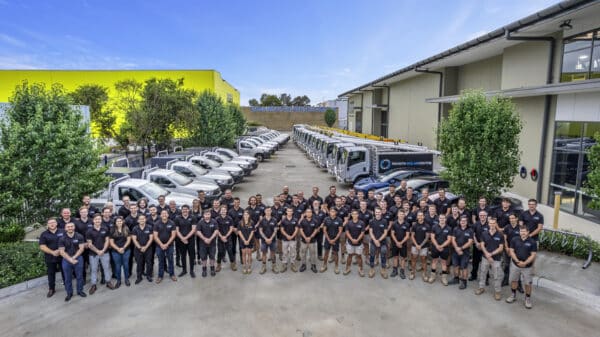
If you’re interested in learning a bit more about how your solar interacts with the grid, you might want to check out the following article titled, Smart Meters and Solar.
